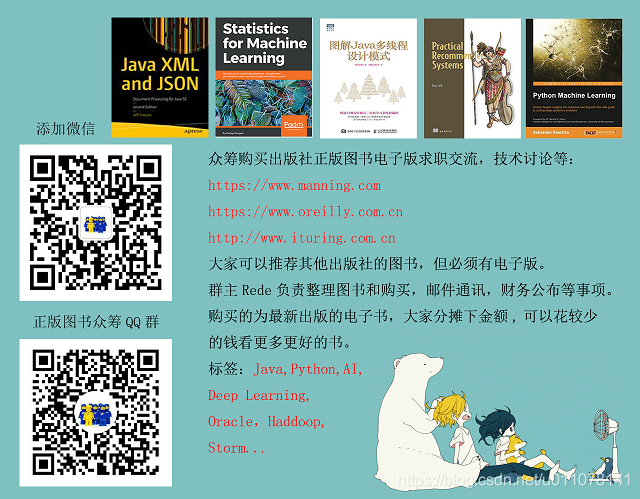什么是集合竞价?有什么用途?
所谓集合竞价就是在当天还没有开盘之前,你可根据前一天的收盘价和对当日股市的预测来输入股票价格,在集合竞价时间里输入计算机主机的所有下单,按照价格优先和时间优先的原则计算出最大成交量的价格,这个价格就会是集合竞价的成交价格,而这个过程被称为集合竞价。
每天开盘价在技术分析上具有重要的意义,目前世界各国股市市场均采用集合竞价的方式来确定开盘价,因为这样可以在一定程度上防止人为操纵现象。
策略实现(基于掘金量化平台)
策略思想
-
获取沪深300的成份股数据,并统计其30天内开盘价大于前收盘价的天数,并在该天数大于阈值18的时候加入股票池。
-
对不在股票池的股票平仓,并等权配置股票池的标的股票,每次交易间隔1个月。
策略主要步骤实现
获取当前交易日日期
now = context.now = context.now 直接调用context.now函数,返回“datetime.datetime”格式
获取上一交易日日期
last_day = get_previous_trading_date(exchange='SHSE', date=now) = get_previous_trading_date(exchange='SHSE', date=now) 获取上一交易日可调用get_previous_trading_date函数,返回值为字符串格式:
-
exchang需要设置交易市场代码。 -
date需要设置指定日期。
获取当天有交易的股票
not_suspended_info = get_history_instruments(symbols='SHSE.000300', start_date=now, end_date=now)
not_suspended_symbols = [item['symbol'] for item in not_suspended_info if not item['is_suspended']]not_suspended_info = get_history_instruments(symbols='SHSE.000300', start_date=now, end_date=now)
not_suspended_symbols = [item['symbol'] for item in not_suspended_info if not item['is_suspended']] 获取当天有交易的股票,即非停牌的股票,首先需获取停牌信息,这里需调用get_history_instruments函数,返回值类型为list[dict],之后就是将所提取的“字典”转换为”list“:
-
symbols需要设置订阅的标的代码。
-
start_date和end_date需设置获取成分股的开始与结束日期,这里需要调成上一交易日以获取上一交易日的成分股信息。
固定月初调仓
schedule(schedule_func=algo, date_rule='1m', time_rule='09:40:00')(schedule_func=algo, date_rule='1m', time_rule='09:40:00') 固定时间调仓可使用schedule函数进行定时任务配置:
-
schedule_func为调用的策略函数的名称。
-
date_rule可设为1m(一月)。 -
time_rule为开仓日的开仓时间,这里设为每月第一个交易日的09:40:00。
获取沪深300成分股
stock300 = get_history_constituents(index='SHSE.000300', start_date=last_day,end_date=last_day)[0]['constituents'].keys() = get_history_constituents(index='SHSE.000300', start_date=last_day,end_date=last_day)[0]['constituents'].keys() 获取指数成分股可调用函数get_history_constituents或者get_constituents,返回值类型为list[dict],这里调用get_history_constituents是因为再回测时需要获取上一交易日的成分股,而get_constituents只能获取最新的成分股:
-
index需要设置获取指数的代码。 -
start_date和end_date需设置获取成分股的开始与结束日期,这里需要调成上一交易日以获取上一交易日的成分股信息。
获取过去交易日的历史信息
return_index_his = history_n(symbol=symbol, frequency='1d', count=30, fields='close,preclose',fill_missing='Last', adjust=ADJUST_PREV, end_time=last_day, df=True) = history_n(symbol=symbol, frequency='1d', count=30, fields='close,preclose',fill_missing='Last', adjust=ADJUST_PREV, end_time=last_day, df=True) 获取历史信息需要调用histor_n函数,默认返回值为“字典“格式,如果参数df设为True,则返回"dataframe"格式
-
symbol设置所需获取的标的代码。 -
frequency获取历史信息的频率,如日线数据设置为1d。 -
count需要设置获取的bar的数量。 -
fileds设置返回值的种类。 -
fill_missing需要设置对于空值的填充方式,None- 不填充,NaN- 用空值填充,Last- 用上一个值填充,默认None。 -
adjust需要设置对于复权的处理,ADJUST_NONE or 0: 不复权,ADJUST_PREV or 1: 前复权,ADJUST_POST or 2: 后复权, 默认不复权。 -
end_time需设置获取历史信息的结束时间。
获取持仓信息
positions = context.account().positions() = context.account().positions() 在判断平仓条件时,需要获取持仓信息(包含持仓均价),这就需要调用context.account().position函数,返回字典型。
策略回测分析

分析
我们选取了2017年7月至2017年10月作为回测周期,应用“EV/EBITDA”单因子作为选股基础。可以看出:
-
胜率(具有盈利的平仓次数与总平仓次数之比)达到了62.5%,也即策略每十次开仓,有六次是盈利的。
-
卡玛比率(年化收益率与历史最大回撤之比)是使用最大回撤率来衡量风险。采用最大回撤率来衡量风险,关注的是最极端的情况。卡玛比率越高表示策略承受每单位最大损失获得的报酬越高。在这里卡玛比率超过了20。
-
夏普比率(年化收益率减无风险收益率的差收益波动率之比)超过5,也即承受一单位的风险,会有超过五单位的收益回报
-
策略收益曲线总体稳定,适合在趋势行情中操作。
# coding=utf-8from __future__ import print_function, absolute_import, unicode_literalsfrom gm.api import *'''本策略通过获取SHSE.000300沪深300的成份股数据并统计其30天内开盘价大于前收盘价的天数,并在该天数大于阈值10的时候加入股票池随后对不在股票池的股票平仓并等权配置股票池的标的,每次交易间隔1个月.回测数据为:SHSE.000300在2015-01-15的成份股回测时间为:2017-07-01 08:00:00到2017-10-01 16:00:00'''def init(context):# 每月第一个交易日的09:40 定时执行algo任务schedule(schedule_func=algo, date_rule='1m', time_rule='09:40:00')# context.count_bench累计天数阙值context.count_bench = 10# 用于对比的天数context.count = 30# 最大交易资金比例context.ratio = 0.8def algo(context):# 获取当前时间now = context.now# 获取上一个交易日last_day = get_previous_trading_date(exchange='SHSE', date=now)# 获取沪深300成份股context.stock300 = get_history_constituents(index='SHSE.000300', start_date=last_day,end_date=last_day)[0]['constituents'].keys()# 获取当天有交易的股票not_suspended_info = get_history_instruments(symbols=context.stock300, start_date=now, end_date=now)not_suspended_symbols = [item['symbol'] for item in not_suspended_info if not item['is_suspended']]trade_symbols = []if not not_suspended_symbols:print('没有当日交易的待选股票')returnfor stock in not_suspended_symbols:recent_data = history_n(symbol=stock, frequency='1d', count=context.count, fields='pre_close,open',fill_missing='Last', adjust=ADJUST_PREV, end_time=now, df=True)diff = recent_data['open'] - recent_data['pre_close']# 获取累计天数超过阙值的标的池.并剔除当天没有交易的股票if len(diff[diff > 0]) >= context.count_bench:trade_symbols.append(stock)print('本次股票池有股票数目: ', len(trade_symbols))# 计算权重percent = 1.0 / len(trade_symbols) * context.ratio# 获取当前所有仓位positions = context.account().positions()# 如标的池有仓位,平不在标的池的仓位for position in positions:symbol = position['symbol']if symbol not in trade_symbols:order_target_percent(symbol=symbol, percent=0, order_type=OrderType_Market,position_side=PositionSide_Long)print('市价单平不在标的池的', symbol)# 对标的池进行操作for symbol in trade_symbols:order_target_percent(symbol=symbol, percent=percent, order_type=OrderType_Market,position_side=PositionSide_Long)print(symbol, '以市价单调整至权重', percent)if __name__ == '__main__':'''strategy_id策略ID,由系统生成filename文件名,请与本文件名保持一致mode实时模式:MODE_LIVE回测模式:MODE_BACKTESTtoken绑定计算机的ID,可在系统设置-密钥管理中生成backtest_start_time回测开始时间backtest_end_time回测结束时间backtest_adjust股票复权方式不复权:ADJUST_NONE前复权:ADJUST_PREV后复权:ADJUST_POSTbacktest_initial_cash回测初始资金backtest_commission_ratio回测佣金比例backtest_slippage_ratio回测滑点比例'''run(strategy_id='strategy_id',filename='main.py',mode=MODE_BACKTEST,token='token_id',backtest_start_time='2017-07-01 08:00:00',backtest_end_time='2017-10-01 16:00:00',backtest_adjust=ADJUST_PREV,backtest_initial_cash=10000000,backtest_commission_ratio=0.0001,backtest_slippage_ratio=0.0001)

文章来源:掘金量化交易平台, 转载请注明出处!
----------------------------------------------------------------------------------------------------------------------------------------------------------
更多经典股票/期货量化策略源码查看:
| 1 | 双均线策略(期货) 量化策略源码 | https://www.myquant.cn/docs/python_strategyies/153 |
| 2 | alpha对冲(股票+期货) 量化策略源码 | https://www.myquant.cn/docs/python_strategyies/101 |
| 3 | 集合竞价选股(股票) 量化策略源码 | https://www.myquant.cn/docs/python_strategyies/102 |
| 4 | 多因子选股(股票) 量化策略源码 | https://www.myquant.cn/docs/python_strategyies/103 |
| 5 | 网格交易(期货) 量化策略源码 | https://www.myquant.cn/docs/python_strategyies/104 |
| 6 | 指数增强(股票) 量化策略源码 | https://www.myquant.cn/docs/python_strategyies/105 |
| 7 | 跨品种套利(期货)量化策略源码 | https://www.myquant.cn/docs/python_strategyies/106 |
| 8 | 跨期套利(期货) 量化策略源码 | https://www.myquant.cn/docs/python_strategyies/107 |
| 9 | 日内回转交易(股票)量化策略源码 | https://www.myquant.cn/docs/python_strategyies/108 |
| 10 | 做市商交易(期货) 量化策略源码 | https://www.myquant.cn/docs/python_strategyies/109 |
| 11 | 海龟交易法(期货) 量化策略源码 | https://www.myquant.cn/docs/python_strategyies/110 |
| 12 | 行业轮动(股票) 量化策略源码 | https://www.myquant.cn/docs/python_strategyies/111 |
| 13 | 机器学习(股票) 量化策略源码 | https://www.myquant.cn/docs/python_strategyies/112 |

























 754
754

 被折叠的 条评论
为什么被折叠?
被折叠的 条评论
为什么被折叠?








